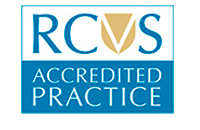24 hour contact: 01707 666297
Pre-purchase Examinations
A Pre-Purchase Examination (Equine PPE) or Vetting, is an important step in the process of buying a horse.
It consists of a standard five stage clinical examination performed for an individual prospective purchaser with a view to assessing the horse in relation to the purchaser’s intended use of the horse. RVC vets are happy to carry out pre-purchase examinations on behalf of existing registered clients or on behalf of new non-registered clients.
We perform vetting examinations throughout our regular catchment area and can travel further afield by prior arrangement. If the animal that is to be examined belongs to a client of the RVC equine practice, we will require permission from the seller to disclose the full clinical history known to us to the prospective purchaser. If permission for disclosure of the horse’s history is not granted we will unfortunately be unable to perform the examination due to a potential conflict of interests.
The five stages of a pre-purchase examination are:
- Stage 1: This is a thorough clinical examination of the horse at rest to detect any apparent signs of injury, disease or physical abnormality. It includes a thorough palpation of all the limbs, listening to the heart and lungs with a stethoscope and an examination of the horse’s eyes in a dark stable with an ophthalmoscope.
- Stage 2: Observation of the horse walking and trotting in hand in a straight line on a hard, level surface, including flexion tests. The horse is normally also trotted on a small diameter circle on a firm surface to detect subtle lameness issues.
- Stage 3: Observation of the horse performing strenuous exercise, normally under saddle. This allows further evaluation of the way the horse moves and assessment of the heart and respiratory systems’ response to exertion. If ridden exercise is not possible (e.g. if the horse is unbroken), this stage may be conducted by exercising the horse on the lunge.
- Stage 4: A period of rest in the stable to give time for any stiffness induced by the exercise to become apparent. During this time the respiratory and cardiovascular systems are monitored as they return to their resting levels. The horse’s markings are normally recorded and the passport examined.
- Stage 5: A second examination of the horse at trot in hand. This is primarily to check that the strenuous exercise has not exacerbated a subtle underlying lameness problem. Flexion tests or trotting on a small diameter circle are sometimes repeated at this time.
Blood Sampling
A blood sample will be taken which is stored for six months. It can be used if concerns arise after purchase, to test for substances such as sedatives, pain killers and anti-inflammatories that may have masked certain conditions at the time of the vetting.
Further Diagnostic Tests
Depending on the horse’s intended use or occasionally as a requirement of the purchaser’s insurance company, we can also perform further diagnostic tests such as x-rays, ultrasound examination of legs or endoscopy of the respiratory tract. We are happy to advise on the requirement of these more detailed diagnostic tests on an individual basis.
The Opinion and Report
Following this comprehensive examination the vet will form an opinion as to whether any of their findings may negatively affect the suitability of the horse for the intended use. The findings and opinion will be reported and discussed with the purchaser, either over the phone or in person if they are in attendance at the vetting. A written certificate will follow.
Two Stage Vettings (2 Stage Equine PPE)
Occasionally we are asked to perform a less comprehensive two stage vetting. This consists of only the first two stages outlined above and so the vet will form an opinion based on a restricted examination. In advance of the vetting a “Limited Prior to Purchase Examination Form” will need to be completed by the prospective purchaser which confirms that they understand and accept that a limited examination may not reveal certain conditions which may have been discovered during the course of a full five stage examination.
Vetting for Insurance
Insurance examinations can also be carried out for an existing owner of a horse and will usually follow the same format as the five-stage pre-purchase examination but will not include an opinion and should not be interpreted as a pre-purchase examination.
Facilities
Most pre-purchase examinations are performed at the stables where the horse is currently kept however, if the appropriate facilities are not available at the yard, we are able to examine horses at the Royal Veterinary College. The facilities required for a 5 stage vetting are a dark stable to examine the eyes, a firm, level surface for trotting and lunging and a suitable arena to exercise the horse. A further advantage to having the examination performed at the RVC is that if further diagnostic imaging tests are required we can provide these at the time of the examination.
Appointments
To arrange a Pre-Purchase Examination either phone 01707 666297 during normal office hours (8am-5pm, Monday to Friday).
Pricing
Five-stage vetting: £300 (inclusive of VAT) includes blood sample

